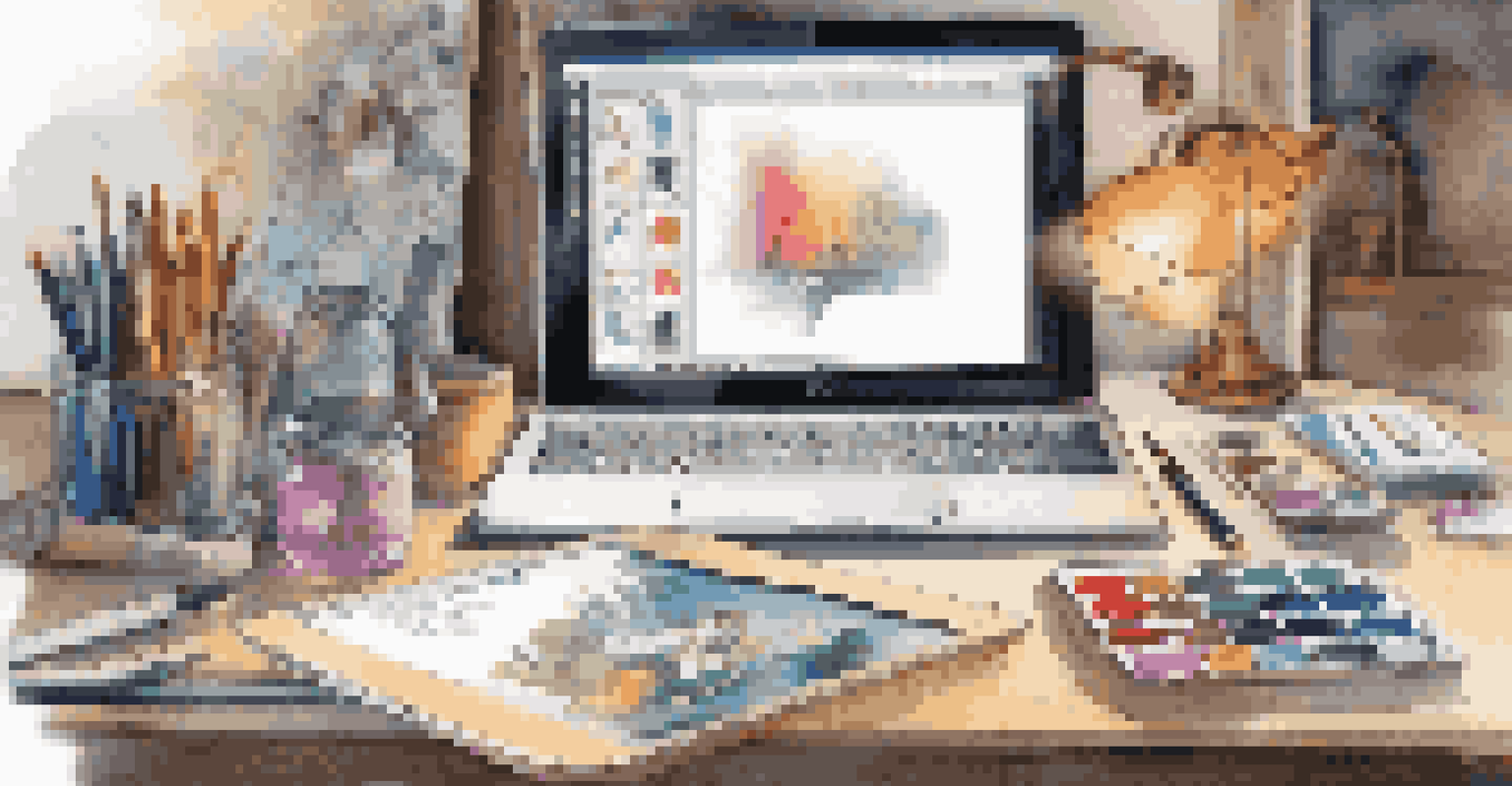Creating Eye-Catching Marketing Materials with Photo Edits

Understanding the Importance of Visuals in Marketing
Visuals play a crucial role in marketing by grabbing attention and conveying messages quickly. In a world where consumers are bombarded with information, an eye-catching image can make all the difference. This is especially true for digital platforms where scrolling is the norm, and your content needs to stand out instantly.
A picture is worth a thousand words.
A well-designed image can evoke emotions, spark interest, and drive engagement. Whether it's a vibrant social media post or an informative flyer, visuals help communicate the brand's message effectively. When combined with compelling text, they create a powerful marketing tool that resonates with the audience.
Moreover, studies show that people process visuals 60,000 times faster than text, which highlights the need for impactful imagery. As you think about your marketing materials, remember that the right visuals can enhance your brand's identity and attract the right customers.
Choosing the Right Photos for Your Marketing Needs
Selecting the right images is the first step toward creating stunning marketing materials. Consider your brand's personality and the message you want to convey. For instance, a playful brand might opt for bright colors and fun imagery, while a luxury brand might choose elegant and minimalistic visuals.

Additionally, ensure that the photos resonate with your target audience. Think about their preferences, interests, and what might catch their eye. Using relatable visuals can create a stronger connection and increase the likelihood of engagement.
Visuals Grab Attention Quickly
Effective visuals can capture consumer attention and convey messages much faster than text.
Don’t forget about the context in which these images will be used. A photo that looks great on a website may not have the same impact in a print advertisement. Always consider how the image will be perceived in different formats to ensure consistency in your marketing efforts.
Basic Photo Editing Techniques to Enhance Visual Appeal
Photo editing can elevate your images from ordinary to extraordinary. Basic techniques like cropping, adjusting brightness, and enhancing colors can significantly improve the visual appeal of your photos. For example, a well-cropped image can draw attention to the focal point and eliminate distractions.
Design is the silent ambassador of your brand.
Moreover, utilizing filters and effects can help convey your brand's style and mood. A soft filter might evoke a nostalgic feeling, while a high-contrast edit can grab attention quickly. Experimenting with these tools allows you to find the right balance that aligns with your brand's identity.
However, it's essential to maintain authenticity. Over-editing can lead to unrealistic images that may alienate your audience. Strive for a polished look while ensuring your visuals remain relatable and true to your brand.
Utilizing Color Theory for Striking Marketing Materials
Color theory is fundamental in creating eye-catching marketing materials. Different colors evoke various emotions and associations, which can significantly influence how your audience perceives your brand. For example, blue often conveys trust and professionalism, while red can evoke excitement and urgency.
When designing your marketing materials, consider a color palette that aligns with your brand's message. Using contrasting colors can help highlight key information, while complementary colors can create a harmonious and appealing look. This thoughtful approach can guide the audience's attention effectively.
Choose Images that Resonate
Selecting the right images that reflect your brand's personality and resonate with your audience is crucial for engagement.
Additionally, consistency in color usage across your materials reinforces brand recognition. When your audience sees the same colors used in various contexts, it helps create a cohesive brand image that is easily recognizable.
Incorporating Text Effectively with Photo Edits
Text is a vital component of marketing materials, and its integration with visuals requires careful consideration. The font style, size, and color can drastically affect readability and overall impact. Opt for fonts that complement your images while ensuring they stand out and remain legible.
Placement of text is equally important. Avoid cluttering your images with too much text; instead, aim for a balanced layout where text and visuals work in harmony. For instance, placing text in a clear space within the image can enhance readability and maintain focus.
Moreover, using text sparingly can create a more striking message. A concise tagline or call-to-action can be more effective than lengthy descriptions, making it easier for your audience to grasp the key points quickly.
Leveraging Online Tools for Photo Editing
In today's digital age, numerous online tools make photo editing accessible to everyone, regardless of skill level. Platforms like Canva and Adobe Spark offer user-friendly interfaces that allow you to edit images, apply filters, and add text with ease. These tools often come equipped with templates specifically designed for marketing materials.
Additionally, many of these tools provide stock photo libraries, giving you access to high-quality images without the need for expensive photography. This can save both time and money, allowing you to focus on creating compelling content.
Test for Marketing Effectiveness
Continuously testing and measuring the impact of your marketing materials helps refine strategies and improve results.
As you explore these online resources, take advantage of tutorials and community forums. They can offer valuable tips and inspiration, helping you refine your photo editing skills and create stunning marketing materials that truly stand out.
Testing and Measuring Your Marketing Material's Impact
Once your marketing materials are ready, it's crucial to test their effectiveness. A/B testing different versions of your visuals can provide insights into what resonates best with your audience. For instance, you might try different images or color schemes to see which yields higher engagement rates.
Additionally, tracking metrics such as click-through rates, shares, and conversions can help you gauge the impact of your materials. Analyzing this data will reveal patterns and preferences, allowing you to fine-tune your approach for future campaigns.

Remember, the goal of your marketing materials is not just to look good but to drive results. By continuously testing and measuring, you can refine your strategy and create even more effective visuals that connect with your audience.